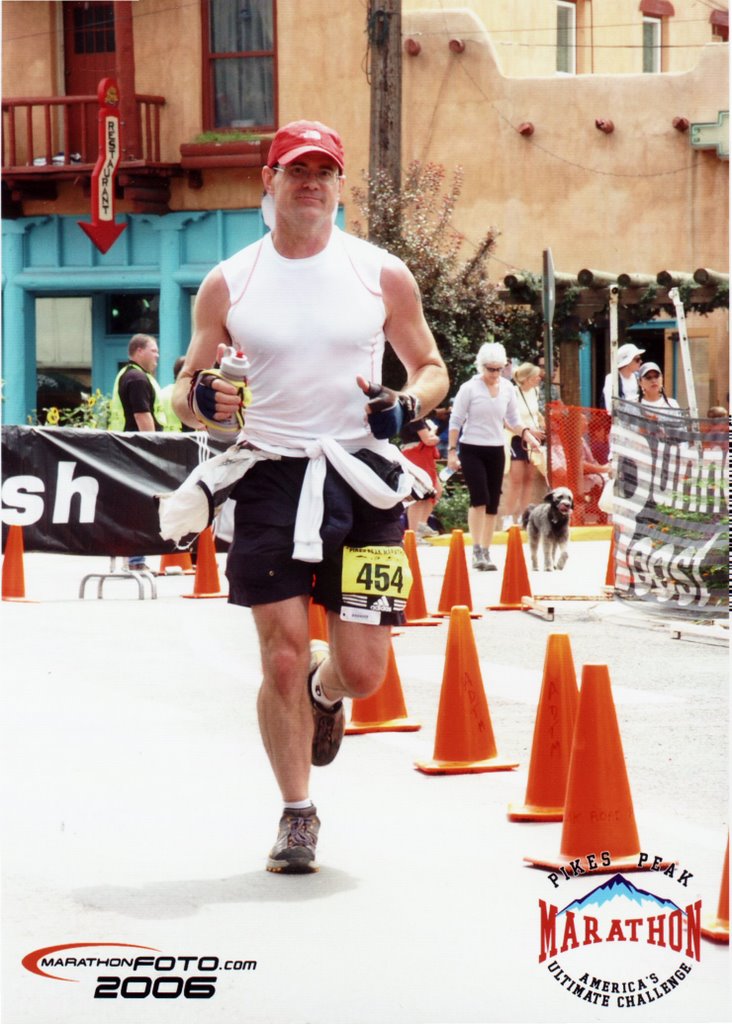Running on Ice
Denver is paved in ice, right now. There's black ice and glossy, bumpy snow-pack ice. It makes for really slick running.
This is an opportunity to brush up on the basics of good running. On nice warm flat ground, you may never learn. But what makes you good on ice also makes you good on warm pavement.
Normally, when people get on ice, they tense up and obsess over whether or not their feet are gripping or sliding. What's happening with your feet isn't really that important, though. What matters most is your Center of Gravity (CG). If you obsess over your CG, and leave your feet, legs, hips and waist loose, then your feet will naturally, subconsciously do what they need to.
This, Grasshopper, is the Zen of running. Keep yourself centered and the rest will follow.
A while back, the Denver Trail Runners was running at night on Green Mountain. Green Mountain has some trails that are full of rolly-polly rocks. One of our new people was kind of freaking out because she didn't have a light. Martin Pahl told her not to worry about her feet. Don't think about them and they'll find their own way. What he meant is pretty much what I've just said.
So running on ice can also help you to run at night, and running at night can help you run on ice. Running at night, on trails, on ice is really advanced, dangerous, but if you survive, it will teach you ideal form.
Trail runners have to use far more core strength, and at the same time, they have to stay loser. Loseness allows dynamic response. Tightening ruins equalibrium and leads to falling.
I've been thinking all this for months, but recently my friend, Christine, mentioned the benefits of running on ice. So I figured it was time I get this written before the end of Winter!
To stay "up", all you need is to keep your feet under you. If you're paying attention to your feet, and not your CG, then you may not be keeping your feet under you.
On totally slick ice, you can't really push off - so you may decelerate some. But most of your forward momentum is from leaning forward, not from pushing off. That's how it should be on warm pavement, too. Running is falling forward while trying to keep your feet under your CG. If that's not what you've been doing, then you've been wasting energy.
As for stepping without looking, when there's rocks, that takes sight. At night, you need some light to see, but you're better off using your peripheral vision. That means minimal or no artificial lighting. If you're doing it right, you shouldn't have to look down. Your eye's cones don't see in the dark as well as the rods, so looking down defeats the purpose.
But if you're an old guy like me recovering from a broken foot, well maybe the rocks and bumpy ice should be avoided a little bit longer.
Don't think I'm old? My last post I said "I ran 7 official races between 22.5 and 31 miles, plus 3 unofficial marathons, plus 2 half-marathons, and some little 6-9 mile races." Actually it was 9 official, 3 unofficial, 3 halfs, and some 6-10 mile races. I can't remember yesterday.


0 Comments:
Post a Comment
<< Home